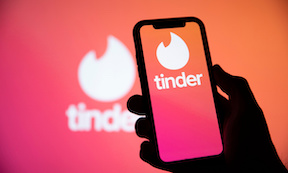
In a bid to increase revenue and cater to more intentional daters, dating apps such as Tinder, Bumble, and Grindr are testing the waters with higher-priced subscription tiers, with additional features such as unlimited swipes that can increase users’ chances of finding a match.
Match Group, the owner of several dating apps, recently introduced a higher-priced plan to Hinge, increasing its monthly rate to around $50. The company is also exploring the possibility of a plan for Tinder that could cost users nearly $500 per month. Bumble is considering a tier above its current $60-a-month plan, while Grindr plans to expand its subscriptions with more premium options.
The decision to introduce these premium tiers comes as companies across various industries are raising prices to recoup rising costs and generate more revenue from each user. Consumers are already paying more for services like streaming and shopping platforms, and dating apps are hoping to tap into this trend.
However, the challenge lies in convincing users of the value of these higher-priced, premium options, especially during a time when consumers are under intense financial pressure.
Moreover, some dating platforms including Match have seen a decline in paying users, but executives at Match believe that converting a small fraction of users to the premium tier can result in tens of millions of dollars in annual revenue, the Wall Street Journal has reported.
The growth of premium-tier subscriptions is the latest evolution in online dating, which has been around since the 1990s. The widespread use of smartphones and the popular swipe-right concept introduced by Tinder propelled dating apps into the mainstream over the past decade.
According to the “ConnectedEconomy™ Monthly Report: The Love and Social Media Edition”, dating app usage has surged 7% in the past year, with 73 million consumers across the U.S. logging in to dating apps like Bumble, Tinder and Hinge every month to search for dates, hookups and partners, and 25 million doing so on a daily basis.
Urban-dwellers make up a significant portion of these users, with 19% logging into dating apps daily. Gen Z and millennials are the most active users, with 55% of adult-age Gen Z consumers and 50% of millennials using these platforms daily. These statistics are not surprising, considering these age groups are statistically less likely to be married compared to other demographics.
But despite the potential benefits of finding love and companionship regardless of gender or age, some users are not oblivious to the safety concerns these app may present.
In fact, PYMNTS’ research shows that 78% of consumers who use dating apps log into social media to verify potential dates’ profiles. Gen Z dating platform users are the most likely to conduct these checks, with 58% of the surveyed age cohort doing so. Millennials and bridge millennials also engage in this behavior, surpassing Gen X in both using dating platforms and checking profiles via social media.
Men, who are are 150% more likely to use dating apps than women, are also 64% more likely to run background checks on potential love interests than women.
The frequent use of dating platforms has also been linked to “swipe fatigue” — a condition where users become tired of endlessly swiping through profiles. As PYMNTS reported, this has led to the emergence of speed dating events and group meetups, which provide a greater sense of security compared to one-on-one meetings.
Dating platforms have also started partnering with event organizers or independently hosting events through platforms like Eventbrite, offering users not only a safer environment for meeting potential dates but also presenting opportunities for businesses to generate revenue, gain exposure and promote their brand.